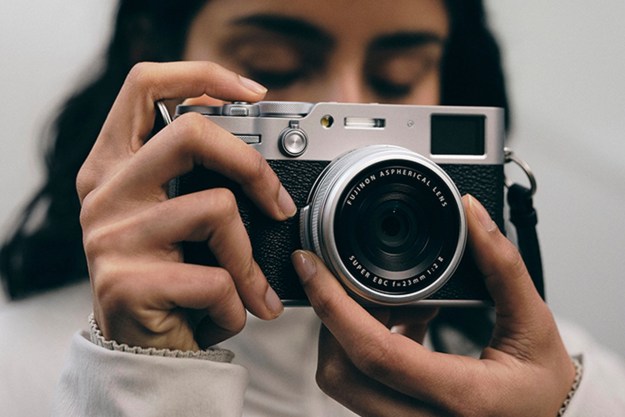
With literally the best seat in the house, Smith posed for almost an hour on the 350-foot freestanding rock known as Monkey Face while photographer Ted Hesser feverishly captured the historic image. Hesser was part of a team that included photographer Andrew Studer. The two worked together on the photo shoot but Hesser produced the work ultimately allowing the images to be created.
Hesser spoke with Digital Trends about the team collaboration behind the photo, the grueling planning process, the camera gear and techniques they used, as well as the historic moment the planets aligned to produce the mystical photo of the century.
Digital Trends: Discuss the planning that went into this “once in a lifetime” eclipse photo.
Ted Hesser: I’d been thinking about this shot for a long time. For such an epic event, I wanted many elements to come together to highlight the moment. I decided that a mountaineer should be in the frame silhouetted against the eclipse and Smith Rock State Park had the best landscape for this kind of shot. My girlfriend Martina Tibell, also a climber and part of the team, and I scouted the area a few weeks before the event and climbed several routes throughout the park.
While climbing the route, Wherever I May Roam, we saw that Monkey Face tower, one of the toughest and most iconic climbs in the US, was the best position for the shoot as it fell directly in line of the exact time of the eclipse. Honestly, Martina and Tommy Smith did the toughest work hours before the solar eclipse.
DT: How so?
TH: On the actual day of the event, Martina and Tommy spent from 7 a.m. until around 9 a.m. climbing the rock and arranging the shoot — twice, in fact — and in scorching heat, to top it off. It was crazy. I mean, this is summer in the middle of the desert, it’s brutal. They actually ran out of water at one point. But, we had to make sure the climb lined up with the eclipse — Andrew and I couldn’t have captured our images without them.
Everyone cheered and howled like wolves. It was wild and exhilarating.
DT: What was the scene like at Smith Rock on the day of the solar eclipse?
TH: It was crazy. There were other photographers and spectators in the area. You could feel the energy — it was electric. Andrew and I were out in the field setting up camera gear and practicing working with the solar filters while Martina and Tommy were climbing. I spoke with the climbers using cell phones trying to make sure everything was in precise position. Finally, after Martina and Tommy made their final ascent, I had Tommy stay in position as 10:20 a.m. approached.
DT: Walk us through the moments leading up to totality.
TH: It was nerve racking because the partial eclipse started disappearing behind Monkey Face and I wondered if the sun’s position shifted since when we scouted the area. Then, the sun appeared from behind the rock just before totality and I told Tommy, “Hold your position,” along with several excited expletives. He didn’t move for a grueling 45 minutes and his thighs were cramping up but I just tried to keep him positive while verbally positioning him and getting the shots.
When totality hit, we heard crickets and the Diamond Ring Effect took place. Tommy was surrounded in this glow and we all knew this was it. I shouted into the speaker, “Tommy, you’re in the Pearly Necklace – this is outrageous.” Everyone cheered and howled like wolves. It was wild and exhilarating.
DT: What camera techniques did you use to capture the images? How did you work around solar filters?
TH: When the partial eclipse started, I put on my solar glasses and used the solar filter on the lens. But the most frustrating part with the filters was not being able to see the landscape because you could only see the sun, nothing else. I found myself taking off the glasses and ducking behind trees and branches to see the composition of the land and then jumping back to the camera, moving it, then resetting it and repeating this pattern over and over — it was super frustrating.
After looking online for tips on eclipse photography, I tried putting a 10-stop neutral density filter on the camera lens instead of the solar filter and zooming it out a little for some of the shots. I honestly didn’t know where the threshold lived in that moment but I figured I could get away with a 10-stop as long as I was wider with my focal range.
DT: What camera settings and gear did you use?
TH: I used the Nikon D800, 80-400mm at 400mm, the ISO was 100 with a f5.6 aperture, shooting at around 1/200 per second, and I didn’t use any solar filters during totality. I bracketed the shutter over a really large range and found that was the best trick. Once I did that, I went for it and got as many shots as possible.
DT: How did you feel when people accused your image of being Photoshopped.
TH: We had a whole team involved, so I didn’t worry about it. And I was also lucky that filmmaker and photographer Michael Shainblum was videotaping the solar eclipse and documenting the entire event, so his amazing video basically shut down any Photoshop rumors.

DT: What was your reaction when the solar eclipse photo went viral?
TH: I was in shock. I couldn’t believe it when I saw both my Instagram and Facebook posts and the number of likes. It’s been entirely overwhelming, I didn’t expect the response from everyone, it’s wild. Honestly, I feel truly humbled and very thankful.
After our interview, Hesser discussed his future plans which include embarking on another epic adventure documenting an archeological expedition in northern Nepal with the world’s best high altitude archeologists. In the meantime, you can find him ascending and photographing some of the world’s most amazing landscapes. His now iconic eclipse image can be found and purchased via his website.
Editors' Recommendations
- How to photograph April’s solar eclipse, according to NASA
- Here’s how you can watch Tuesday’s total solar eclipse over South America



